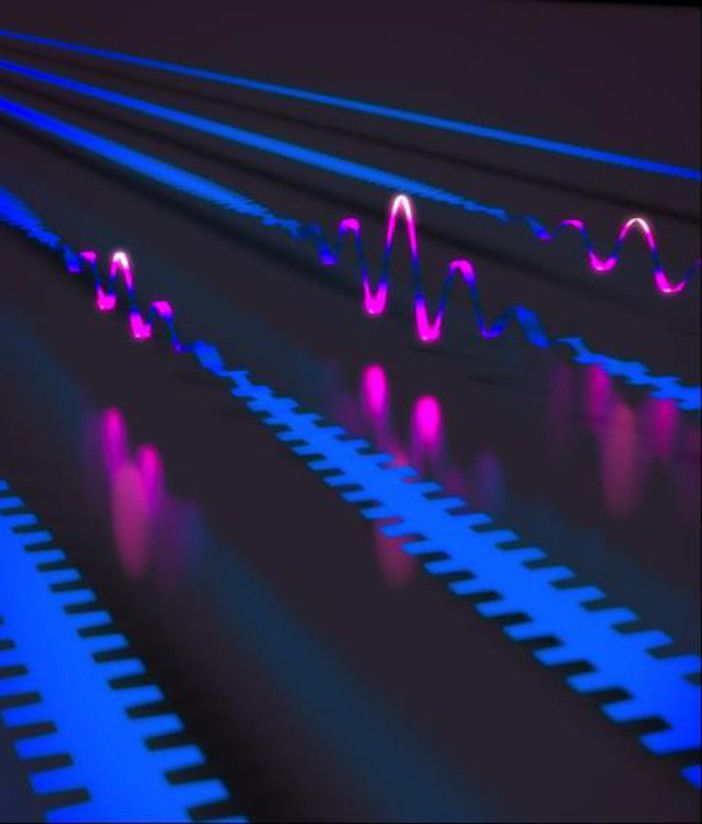Vibrations of a Strained Phononic Crystal (Image: Woogieworks)
French Engineers have developed a ‘nanostring device’, they say could be used to detect tiny forces, at the level of attonewtons, equivalent to the gravitational pull between humans.
Researchers in the Kippenberg lab at the École polytechnique fédérale de Lausanne made a string 10nm thick and 1cm long, into which vibrations could be trapped around a central defect, a phononic crystal.
Measurements made on nanostring devices at room temperature reveal localized modes that vibrate at 1MHz for tens of minutes, corresponding to a quality factor of 800 million. Transposed onto a standard guitar string, an equivalent ‘note’ would play for a month.
By dint of their small mass and extreme quality factors, nanostrings similar to those developed in the Kippenberg lab are expected to have an important impact on traditional sensing applications. Operated as force sensors, for example, they are capable of detecting local disturbances at the level of attonewtons.
Another possible application, said the researchers, is to detect weak light forces. By coupling a nanostring to an optical waveguide, it can be used an ultrasensitive microphone, ‘hearing’ the sound of photons in a laser beam.
This measurement can be used to generate a non-classical state of light known as squeezed light, which can be used to enhance the sensitivity of an optical interferometer.
Researchers are now investigating if the same light field can ‘see’ the vacuum fluctuations of the nanostring as a consequence of its phonon-like nature.
“Heisenberg’s uncertainty principle predicts that the two capabilities are commensurate,” said Dalziel Wilson, one of the researchers. “Operating at this so-called standard quantum limit offers the possibility of cooling a tangibly-sized mechanical object from room temperature to absolute zero, its motional ground state, the starting point for myriad quantum experiments.”
April 12, 2018





